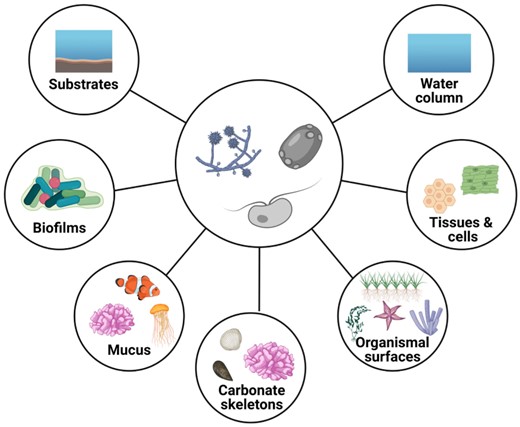2023-04-13 スイス連邦工科大学ローザンヌ校(EPFL)
マリンバイオロジストのClaudia Pogoreutzは、海洋真菌に焦点を当て、その機能的特徴がまだ十分に理解されていないことを指摘している。彼女は、海洋真菌が死んだ細菌や他の細胞を分解してサンゴや藻類の栄養源に変える可能性があると主張している。また、真菌が抗微生物化合物を生成して病原菌を防ぐ可能性もあると考えられている。
これらの研究は、ストレスを受けたサンゴの健康を回復するための新たな展望を開き、新薬の開発や産業応用につながる可能性がある。
<関連情報>
- https://actu.epfl.ch/news/fungi-s-beneficial-effects-on-coral-are-not-yet-fu/
- https://academic.oup.com/femsre/article/46/6/fuac028/6615459?login=false
サンゴ礁関連真菌の多様性と機能を理解するためのロードマップ A roadmap to understanding diversity and function of coral reef-associated fungi
Anna Roik, Miriam Reverter, Claudia Pogoreutz
FEMS Microbiology Reviews Published:23 June 2022
DOI:https://doi.org/10.1093/femsre/fuac028

Abstract
Tropical coral reefs are hotspots of marine productivity, owing to the association of reef-building corals with endosymbiotic algae and metabolically diverse bacterial communities. However, the functional importance of fungi, well-known for their contribution to shaping terrestrial ecosystems and global nutrient cycles, remains underexplored on coral reefs. We here conceptualize how fungal functional traits may have facilitated the spread, diversification, and ecological adaptation of marine fungi on coral reefs. We propose that functions of reef-associated fungi may be diverse and go beyond their hitherto described roles of pathogens and bioeroders, including but not limited to reef-scale biogeochemical cycles and the structuring of coral-associated and environmental microbiomes via chemical mediation. Recent technological and conceptual advances will allow the elucidation of the physiological, ecological, and chemical contributions of understudied marine fungi to coral holobiont and reef ecosystem functioning and health and may help provide an outlook for reef management actions.


